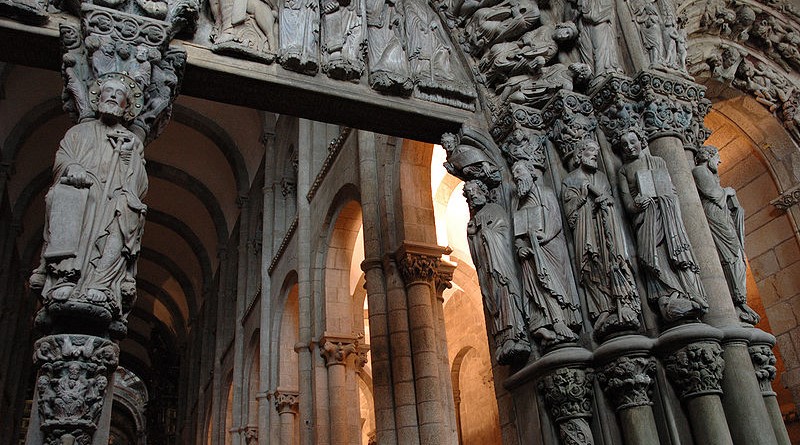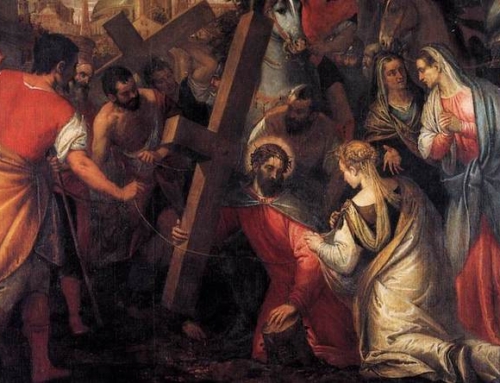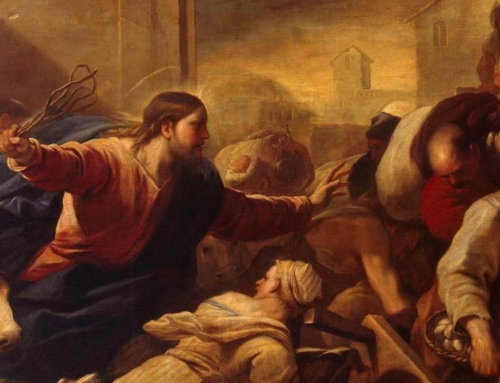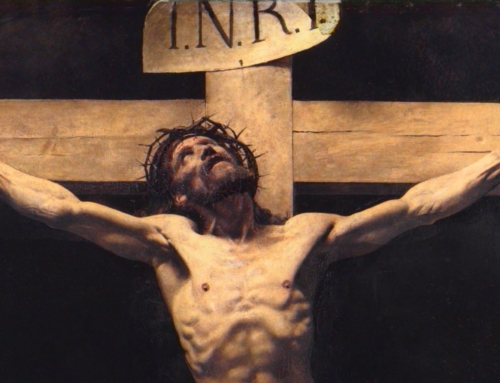A surprising proportion of scripture describes architecture. Such passages usually describe Israel’s Tabernacle and, later, Temple—the places where God made himself present to Israel. A full third of Exodus describes the design and furnishings of the Tabernacle. Six chapters of Second Chronicles treat of the Temple’s building and dedication. The majority of Ezekiel 40–48 recounts a vision of a new Temple, and it spares no details—we read of the wood trim of windows and the alternation between designs of cherubim and palm trees above a doorway (Ezek 41:15-20). These passages often help theology students catch up on sleep.
Yet Scripture’s attention to sacred architecture has a purpose. Consider Psalm 48:
Walk through Sion, walk all around her;
count the number of her towers.
Consider all her ramparts; examine her castles,
that you may tell the next generation that such is our God,
our God forever and always. He will guide us forever (Ps 48:13-15).
God’s mysterious presence made the Temple holy, and the grandeur of the Temple’s architecture conveyed his holiness. Those who saw the mighty stones of that glorious edifice glimpsed a shadow of God’s constancy and splendor. They could speak the words of the psalm to one another: “such is our God.”
The time of the Temple in Jerusalem came to an end. A new temple replaced it, the temple of Christ’s body (cf. John 2:19-22). This new temple has many stones, just as Christ’s body has many members (cf. 1 Cor 12:12). God was not content to build his new temple with hewn marble and columns of bronze. He decided upon nobler adornments. He continues to build a temple out of the saints as living stones. Saint Paul declares to the baptized:
You are fellow citizens with the holy ones and members of the household of God, built upon the foundation of the apostles and prophets, with Christ Jesus himself as the capstone. Through him the whole structure is held together and grows into a temple sacred in the Lord; in him you also are being built together into a dwelling place of God in the Spirit (Eph 2:19-22).
This temple spans heaven and earth; it includes both the saints in heavenly glory, and all those in the process of being made saints. God’s grace has crafted and continues to craft many saints into marvelous works of art, chiseling away their every imperfection. God has given each age and place its proper saints, and all of them fit into the schema of his temple. Beyond the foundation of the apostles, Christ fashioned doors for his temple in missionaries like St. Patrick and Mother Cabrini. As windows, he placed in his Church saints like Thomas Aquinas and Thérèse of Lisieux to brighten the building with luminous teaching. Though less noticed, the tiles of the floor are essential, too. Without countless generations of humble mothers and fathers and Sunday school teachers passing along the faith, no one could stand.
The pieces of Christ’s temple are varied, but each has its purpose. If he had not given different gifts to each part, the whole structure would collapse. This temple knows a delightful harmony. The vaulting does not lament that it is not the altar, nor do the ramparts begrudge the candlesticks their luster. Indeed, to be a nail in the window trim of this temple is bliss.
Christ makes the temple holy and holds it together. All holiness flows from him, and the saints are saints precisely because of their union with him. By that union, what is true of Christ becomes true of them. In the saints, Christ’s inexhaustible goodness thus finds a multiform expression. It is his goodness, shared with mankind, that adorns every nook and cranny of the temple with jubilant colors and designs. By incorporating the saints into the temple of his body, Christ comes to full stature, present in every age to more and more peoples. We come to know him better when we meditate upon the lives of the saints, exploring this magnificent temple and praying:
Walk through Sion, walk all around her;
count the number of her towers.
Consider all her ramparts; examine her castles,
that you may tell the next generation that such is our God,
our God forever and always. He will guide us forever (Ps 48:13-15).
✠
Image: Portico de la Gloria. Photo by Eduardo De Riquer (CC BY-SA 3.0)







